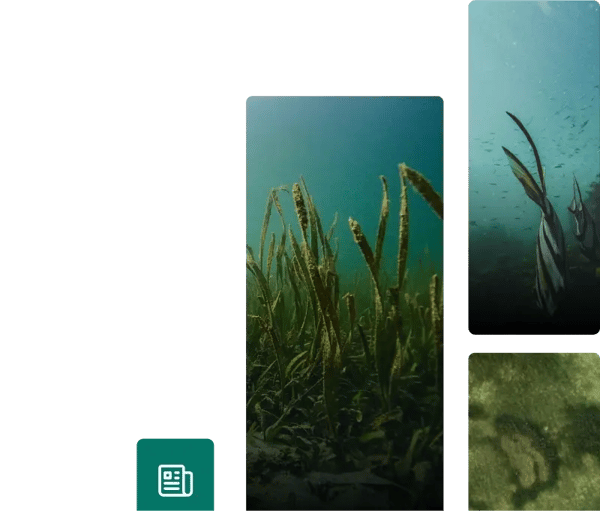Table of contents
Carbon offsetting is an internationally recognized mechanism to manage unavoidable carbon emissions. Although this term is outdated as we have shifted the terminology to climate contribution, here you will find background on the term. To understand the difference between carbon offsetting and climate contribution, please read our dedicated article.
Background on Carbon Offsetting
A tonne of carbon is said to be “offset” when its emitter has provided essential-support to the capture, storage, or avoidance of emission of one tonne of carbon, generally by financing an external program that creates/maintains carbon sinks or avoids carbon emissions that would have taken place otherwise.
By supporting such initiatives, businesses and organizations can contribute to various projects and to the carbon footprint they haven’t managed to avoid. Climate contributions follow an ambitious, effective, and continuous reduction plan.
The contribution market has now an almost 20-year-long history since its inception under the framework of the United Nations Framework Convention on Climate Change (UNFCCC). The aim of the climate contribution market is to help the Northern countries reach their Kyoto Protocol target by funding greenhouse gases (GHG) emissions reduction actions in Southern Hemisphere countries, in a win-win vision based on the research of the cheapest technologies and places to cut carbon emissions.
At its early stage, the majority of carbon credits (named Clean Development Mechanism, CDM by the UNFCCC) were issued mainly by Asian countries by mere destruction of industrial gases with high global warming potential and sold to some Northern countries which faced difficulties to reach their reduction objective with domestic actions only. Renewable power infrastructure in emerging countries has been the other key driver of the UNFCCC carbon offset market.
Later on, to complement countries’ action under the UNFCCC umbrella, the voluntary carbon market took off with the aim of addressing carbon emitters in any part of the economy: cities, businesses, and individuals, that would reach carbon neutrality by funding smaller carbon reduction or carbon storage programs managed by private organizations with co-benefits to the communities and biodiversity – somehow anticipating the Sustainable Development Goals that the UN would issue some years later in 2015.
Technological Advancements
A large range of technologies may capture or store carbon or avoid GHG emissions and hence deliver “carbon credits” that will be used to contribute to the carbon footprint in order to reach full or partial “carbon neutrality”. Among the various offers available on the carbon offset market, the following technologies should be highlighted:
- Renewable power infrastructures that contribute to decarbonizing the local power grid and thus avoid GHG emissions;
- Energy efficiency and fuel switching action;
- Landfill projects designed to capture the methane issued by the waste disposal and provide it to the communities in substitution for fossil fuels;
- Local renewable lighting systems that avoid using high-carbon power to get light in remote areas;
- Alternative low carbon transportation infrastructure (like cycling);
- Efficient cook stoves or individual biogas producers using cattle manure, which will significantly reduce wood consumption for daily cooking in rural communities and hence prevent deforestation that generates carbon emissions;
- Supply of water filters to households in rural communities, which will remove the need to boil water and hence cut carbon emissions;
- In a transparent and win-win partnership with local communities, protection of existing forest areas that are threatened by local human activities in order to maintain carbon storage along with benefits for biodiversity; and afforestation in new regions in order to develop new carbon sinks;
- Climate-friendly practices in agriculture that maintain carbon in the soils while increasing their fertility, restoring biodiversity, and developing new sources of income for smallholders.
All climate contribution programs and providers are expected to be compliant with international calculation methodologies under rigorous control of competent third-party officers within internationally recognized frameworks such as the Reduced Emissions from Deforestation and Forest Degradation (REDD+), the Clean Development Mechanism (CDM), and the Joint Implementation (JI) under the Kyoto Protocol; and internationally recognized labels like American Carbon Registry (ACR), Climate Action Reserve (CAR), Gold Standard, Plan Vivo, and Verified Carbon Standard (VCS) for the voluntary carbon offset market. Other standards have been added to certify dimensions, such as social benefits or biodiversity conservation.
ClimateSeed service
At ClimateSeed, we offer high-quality carbon sequestration and avoidance projects that generate carbon credits.
Our expertise and technology ensure traceability, transparency and risk mitigation.
Share this
You May Also Like
These Related Stories

Carbon offsetting vs. Climate contribution
.jpg?width=4928&height=3264&name=sun-shining-in-rain-drops-alt-sunset-in-nature-2022-02-02-03-49-48-utc%20(1).jpg)
What is Insetting?



